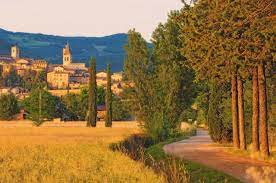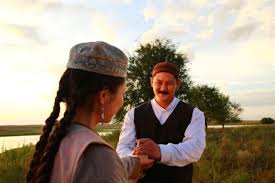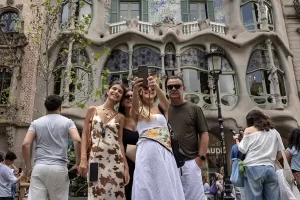Italy: How to love Italy sweet life—‘dolce vita’

Rome: To hold Dolce Vita—the new silk-swathed hardcover released by luxury publisher Assouline—in my hands feels as though I am embracing the essence and sensuousness of Italy itself. Sweet Life! Written by Italy connoisseur Cesare Cunaccia, this hefty (10-by-13-inch, 6.4-pound, 320-page) coffee-table tome showcases almost 200 expressive and evocative photographs that invite lovely lingering perusal. If you’re seeking an armchair traveler’s page-turner for yourself to kick off 2024 or a Valentine’s Day gift for a dreamer of things bellissimo, this pleases aplenty. Dolce Vita is a visual joy ride, chic and engaging. Indeed, gazing at its images fuels my fantasies of sliding onto a Vespa or into an Alfa Romeo, breezily wheeling from Venice to Milan to Genoa to Florence to Rome to Naples to Sorrento and beyond, through undulating verdant landscapes and glistening seaside ports, savoring fantastic cuisine, then sailing to Sicily for more. Prego!
Cunaccia, who has penned several best-selling Assouline publications, is also a journalist, editor, author of an array of other books about Italian art and heritage, curator and university professor. In the introduction, he launches this book’s theme by first focusing on Italian filmmaker Federico Fellini’s 1960 film La Dolce Vita, which lays bare the escapades, yearnings and misgivings of a newspaper reporter, played by Marcello Mastroianni, who chronicles the sensational lives of movie stars, playboys, aristocrats and night revelers. The exquisitely shot, cinematic masterpiece—boundary-thwarting, hedonistic, surrealistic and statement-making—aroused audiences worldwide, igniting tremendous applause, ravenous swoons, as well as scandalous brouhaha. A mega-award-winner, it explored desire and the purpose of life. “The film forever changed the accepted meaning and image of Italy,” says Cunaccia. In the decades since then, the term dolce vita has spotlit an Italian “aesthetic and emotional filter which, to this day, remains impossible to surpass…beauty, art, music and nature,” he enthuses. It “is an attitude, a source of entertainment, a mood consisting of sophistication and simplicity, a pinwheel of sensations and significant details…. Today’s Italy is immersed in this vision.”
Italians have long called their nation Bel Paese (beautiful country) as it “exudes the scent of belonging that has become a symbolic gateway and passport to a fortunate, multi-faceted and fulfilling land,” muses Cunaccia. In modern high-end advertising and marketing campaigns, in contemporary music and novels, in recent films and TV series (such as Season 2 of HBO/MAX’s much-buzzed-about White Lotus, set in Sicily), the allure and mystery of Italy is celebrated. Cunaccia weaves together an intimate peek at inimitable destinations. Once you’ve dove into Dolce Vita, it is likely that you’ll pine for a vacation in Italy. He writes: “The geometric harmony of the Tuscan countryside, the green soul of Umbria, the rocky shores of Liguria, the beaches and coasts of Sicily looking out over emerald waters, Capri, Positano and Amalfi, stunning microcosms that never cease to amaze us… Dolce vita as a password and aspiration….” His lyrical and illuminating text describes dramatic Italian scenarios, points out distinctive personalities, unveils favorite finds and unfurls a swirl of coveted swank. “Timeless beauty, the overlapping of past and present, centuries of incomparable art, Greek and Roman ruins, the song of the sea, an ancient civilization and a spirit that is quick-witted, poetic, sarcastic, controversial and fiercely individual, looking backwards to look to the future,” says Cunaccia. “Dolce Vita means Italy.”
Dolce Vita’s photographs lean into the glow of yesteryear’s iconic celebrities: Sophia Loren and Elizabeth Taylor smiling; Claudia Schiffer, dressed in Valentino, splashing in Rome’s Trevi Fountain; Paul Newman disembarking a plane in Venice, carrying papers from the William Morris Agency; Brigitte Bardot strolling barefoot on a Capri sidewalk; Gregory Peck dining al fresco along a bank of the Arno River; and Salvatore Ferragamo opening a car door for Audrey Hepburn in Florence. Dolce Vita also serves up ample current-era images. There is shirtless Jude Law lounging outdoors while filming The Talented Mr. Ripley; Bella Hadid delighting in a bowl of pasta; and bikini-wearing Christy Turlington listening to a guitar player. Camera lenses capture youthful zest, fresh faces and of-the-moment romantic retreats.
Time spent browsing Dolce Vita’s come-hither quality photos can be a seductive journey. Ogle charming, tile-roofed villages. Imagine meandering the labyrinth pastel alleyways of Bari and wandering the wildflower fields of Siena. Cypress trees line rural roads. Age-old bridges crisscross rivers. Religious structures are prevalent: Peer at Florence’s elaborate Cathedral of Santa Maria del Fiore, consecrated in 1436; San Bartolomeo, a Romanesque- and Gothic-style church in Tuscany; and the small Chapel of the Madonna di Vitaleta, a hill-top Tuscan gem near San Quirico d’Orcia. Umbria’s tranquil vineyards radiate soothing hues. Eye cafés, taverns and restaurants, such as Giardino di Bacco (Garden of Bacchus) in Sicily’s Catania at the foot of Mount Etna and Venice’s Café Florian, which opened in 1720, Italy’s oldest continuously operating coffee house. Among the tastiest Italian pleasures are the Amalfi Coast’s intoxicating Limoncello, Naples’s oven-fired pizza and Florence’s artisanal gelato. Monuments, museums and murals abound. Behold renowned sites, such as Rome’s Colosseum and Spanish Steps; St. Peter’s Basilica in Vatican City; and the Greek-Roman theater in Taormina, Sicily, built in the third century B.C., which boasts spectacular views of the Mediterranean.
Cliffside terraces hang near beribboned stretches of sea that are dotted with rowboats, yachts and ships. Beaches and beach clubs, such as the peaceful oasis at Augustus Hotel & Resort in Forte dei Marmi on the Tuscany coast, entice. Picturesque isles woo. Attractive men and women swim, sunbathe, sup and smooch. Markets brim with fruit. Urban squares encourage community, such as Piazza Maggiore in Bologna. Note the couture shows and flourishing street fashion. A gorgeous sightseeing feast.
As a hotel aficionado, I’m particularly passionate about five-star havens. Dolce Vita features photographs of ace accommodations, such as perfecto Le Sirenuse in Positano, owned by the Sersale family for three generations, perched above azure sea; elegant Splendido, a Belmond Hotel, in Portofino; and Quisisana Grand Hotel in Capri with its famous Bar Quisi—a hotspot populated by cool actors, artists, authors, biz whizzes, socialites and royalty.
As is customary in many Assouline books, insights from quotable notables are sprinkled throughout pages as both inspiration and design motif. Here, a sampling of such sayings from Dolce Vita.
“If you want la dolce vita, it is how you look at life.”—Anita Ekberg, actor
“Italian style is the ability to turn the ordinary into extraordinary on a daily basis.”—Soledad Twombly, fashion designer and interior decorator
“Positano bites deep. It is a dream place that isn’t quite real when you are there and becomes beckoningly real after you have gone.”—John Steinbeck, author
“This is what Tuscany is to me: a metaphor, or rather an ever-present memory of an imperfect love…a love that attracts beauty.”—Massimo Listri, photographer
“Italian craftsmanship is totally unmatchable. And in Italy it is something that is extremely connected to society. People don’t just do it for the money, they do it because they love it.”—Fausto Puglisi, designer
“Italy is undoubtedly the cradle of a sort of creativity that expresses itself not only in artistic aspects but especially in terms of emotion and humanity.”—Fabio Salini, jewelry designer
“You may have the universe if I may have Italy.”—Giuseppe Verdi, composer
“Put a compass to paper and trace a circle. Then tell me which other country has such a concentration of places like Amalfi, Naples, Ischia, Procida, Sorrento, Positano, Pompeii and Capri.”—Diego Della Valle, CEO of Tod’s Group





